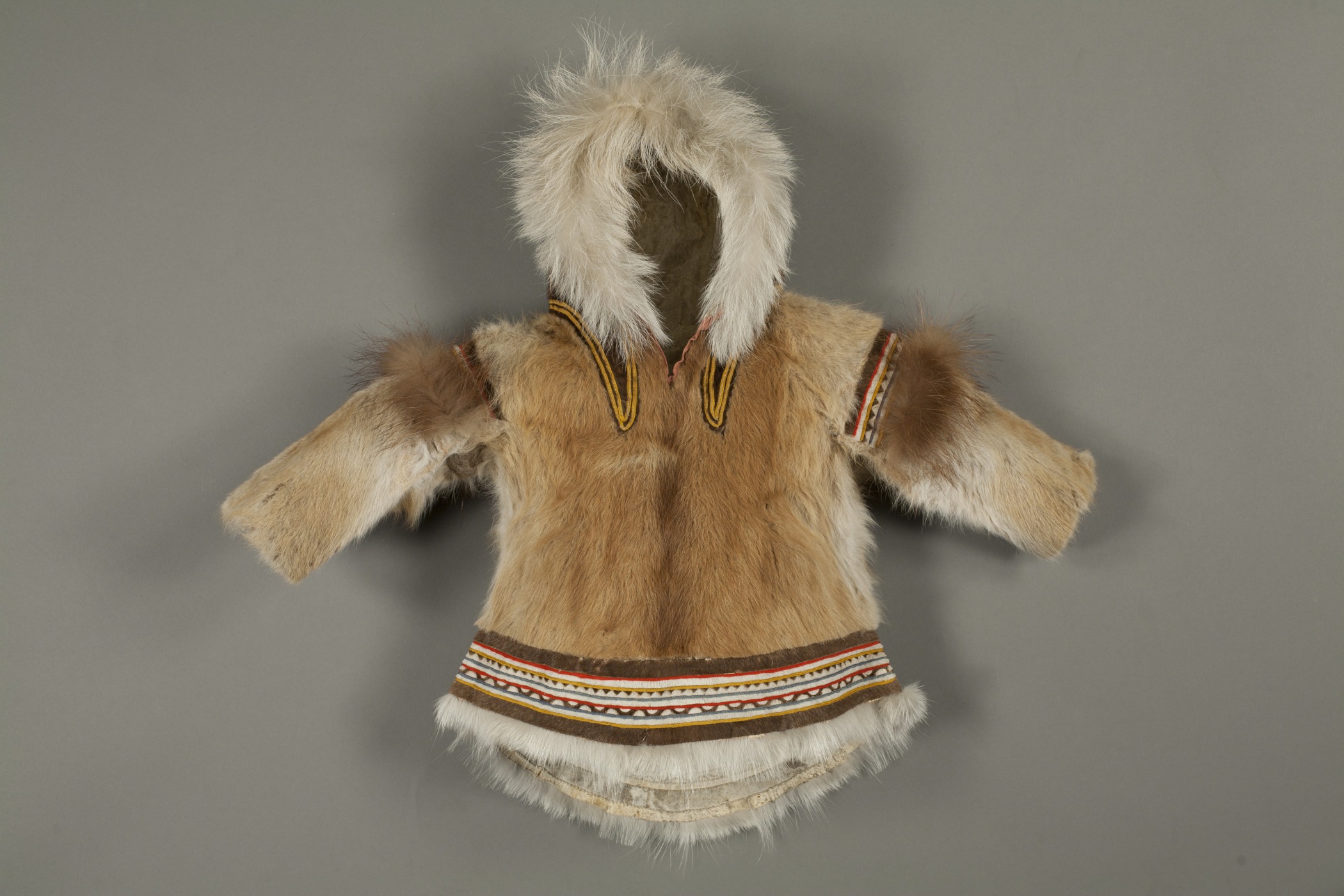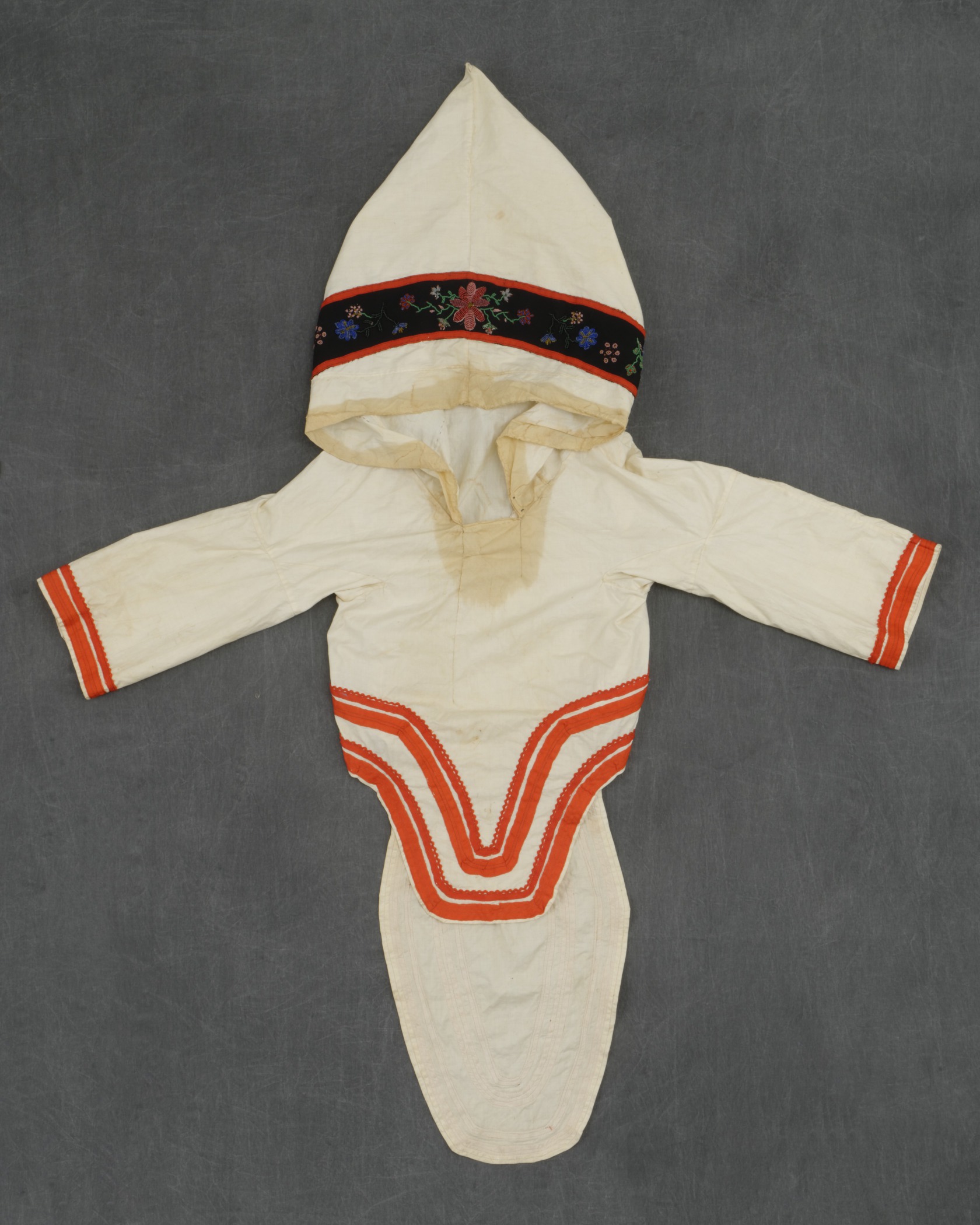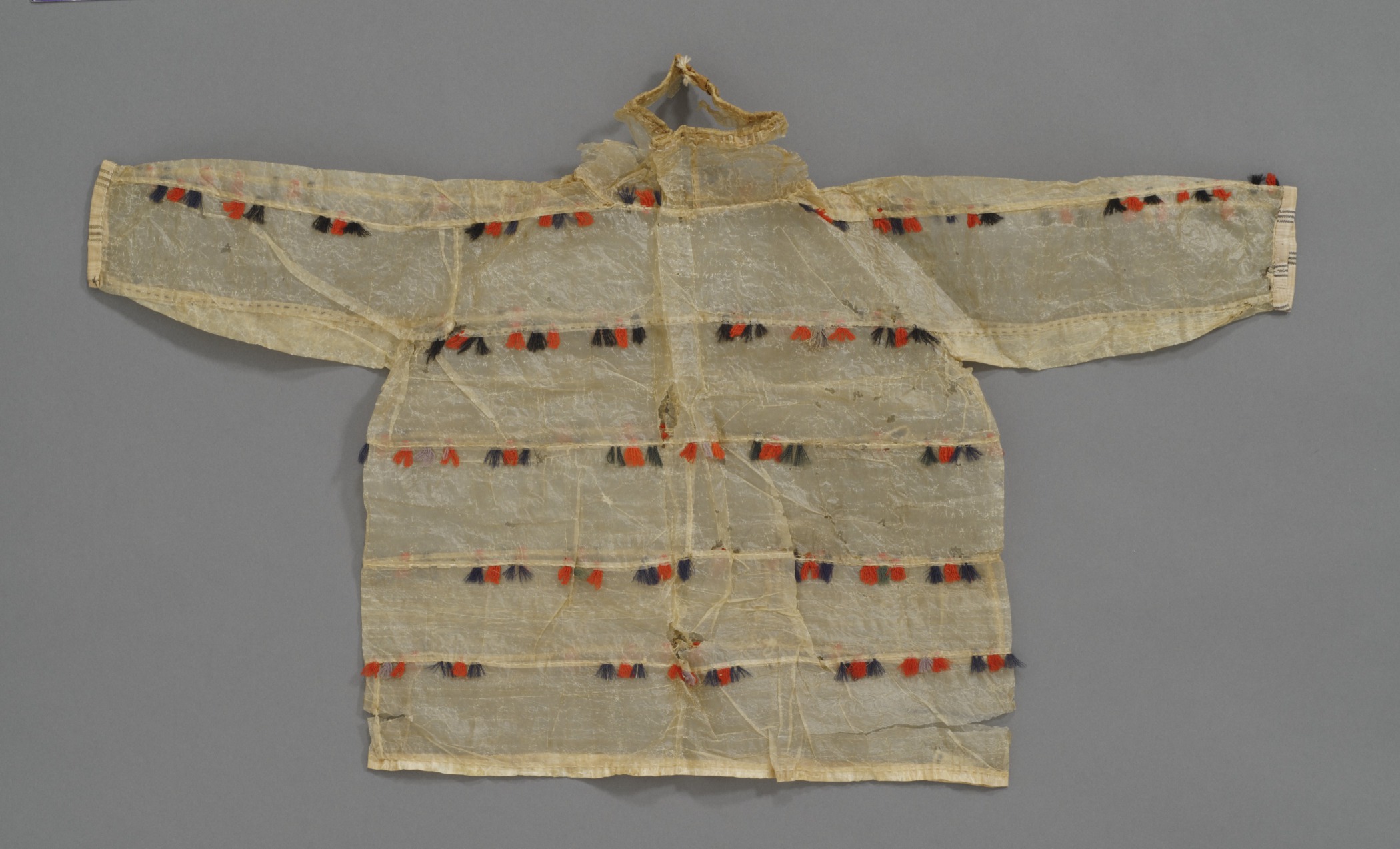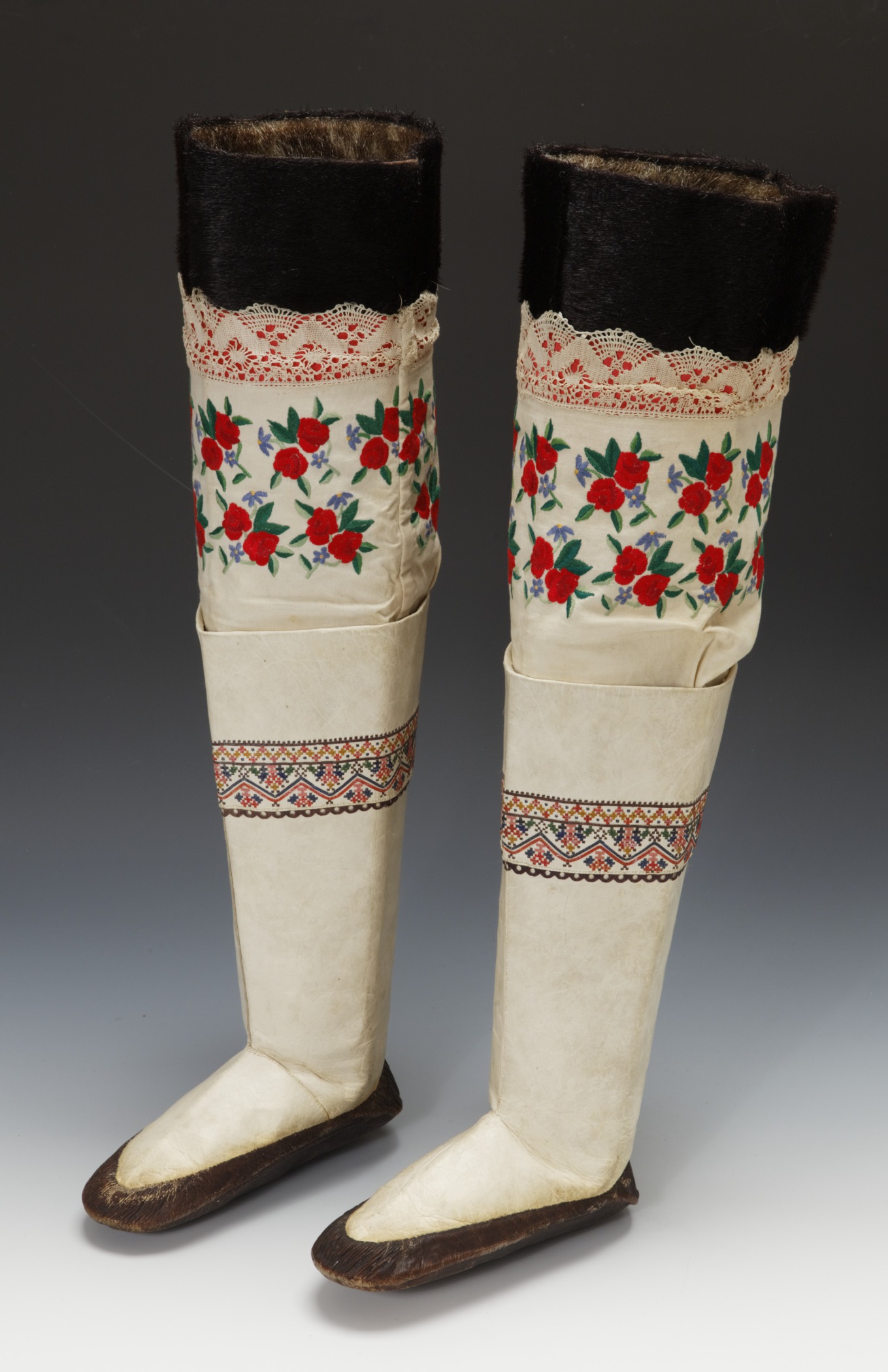Kalaallit (West Greenlandic Inuit)
Girl’s costume made for Mona Jean Lloyd (Mollerup)
- 1945
- Sealskin, hide, cotton cloth, silk, lace, dye, embroidery thread, and thread
- 23 7/16 × 9 1/16 × 8 7/16 in.
Hood Museum of Art, Dartmouth College: Gift of Mona Lloyd; 157.14.13901
visibilityLook & DiscussTraditional clothing is sometimes made and worn for special occasions. It surrounds wearers in a physical representation of their cultural identity, and connects the maker and the wearer to their past and present community.
explore the object
These boots are part of a traditional costume worn only by unmarried girls on special occasions. The clothing is usually made cooperatively as a gift from the community, and each child’s version is unique. Men provide the seal skin and caribou hide. One woman is in charge of the overall design, but many women contribute to its execution. The embellishments are inspired by the beauty of Greenland in springtime and also the floral designs of European fabrics and textiles, particularly embroidery patterns popular in Norway and Denmark.
These boots have uppers made of native bleached seal skin and caribou hide soles. Trade goods like cotton cloth, silk, lace, dye, and embroidery and cotton thread decorate the uppers.
The traditional ensemble also includes a bib-like shirt embroidered at the collar.
This is topped by a cloth sweater with an elaborately beaded shoulder yoke. These yokes have become bigger over time as access to European goods increased in Greenland.
Beaded cuffs cover the wrists.
Below the shirt, the young girl wears sealskin shorts with velvet trim. The shorts tuck into the tall boots, which reach mid-thigh. In this way, the entire body is covered.
Today this Greenlandic national costume is worn on special occasions and at festivals such as Christmas, Easter, Greenland’s National Day, and on the very first day of school.





